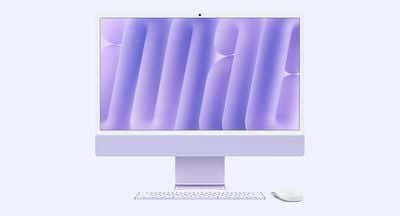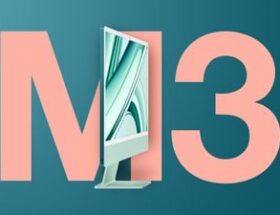Joe Rossignol
The new iMac will go on sale in stores and begin shipping to customers this Friday, with early reviews of Apple's newest all-in-one desktop computer published by select media outlets and YouTube channels.

While the iMac doesn't get any major design changes this year, the computer could feature a matte nano-texture display for the first time in the Apple silicon era. This $200 upgrade option reduces reflectivity and glare on the screen, which can be useful if you use your iMac near a window or in bright light.
Six Colors' Jason Snell on the nano-texture display:
Using the nano-texture display is a little weird — reflections just stop at the edge of the screen, like magic. It works incredibly well. And most of the time, in more normal lighting, I didn't really notice the nano-texture. (Yes, if you look closely, you'll notice light leakage, which can reduce contrast a bit.)
CNET's Matt Elliott:
Our iMac M4 test model came with the $200 Nano Texture Glass display upgrade. It was very effective at reducing glare and reflections as I moved the iMac around my house to see how it handled direct sunlight and bright artificial light from above. In each case, it did its job of eliminating distractions. As impressive as Nano Texture Glass is, you probably won’t need it if you plan to place your iMac in a room with normal lighting. It’s a feature that’s more valuable on a MacBook or iPad, which you’ll use in a variety of places, including outdoors.
The new iMac is powered by Apple’s latest M4 chip. Based on results available in the Geekbench 6 database at the time of writing, higher-end iMac configurations with the 10-core M4 chip achieved an average score of 14,512 for multi-core CPU performance, compared to an average score of 11,711 for the previous iMac with the highest-end 8-core M3 chip. That means the new iMac is nearly 25 percent faster than the previous model.
Apple has updated the iMac with a 12-megapixel front-facing camera that supports Center Stage, a feature that lets you stay centered in the camera's field of view as you move around. The new iMac and MacBook Pro are the first Macs to support Center Stage without needing to be connected to a Studio Display. There's also a feature called Desk View, which shows your face and an overhead view of your desk at the same time.
Forbes' David Phelan on the Center Stage camera:
There are no other visible differences between the new iMac and last year's model, although the front-facing camera is a different component, now called the Center Stage camera.
It has a feature called Desk View, which means you can show your physical desktop, as well as what's on your screen, to people on the other end of a call. It works really well. The camera is excellent, and while some have complained in the past about poor video calling quality, here it seems flawless, clear, and watchable.
Macworld's Roman Loyola:
The M1 and M3 iMacs have a 1080p FaceTime camera, which was… good. It worked, but it wasn't impressive. With the M4 iMac, Apple has finally moved to a 12-megapixel Center Stage camera, the same one Apple is bringing to the Mac lineup in 2022 via its Studio Display. Why we had to wait more than two years to see it on the iMac, only Apple knows, but it’s here, and it’s fantastic.
Jason Snell of Six Colors shared a comparison of the Studio Display camera (left) and the new iMac camera (right):
Many of the other new features and changes are obvious: the iMac now officially supports two external displays for the first time since it was still using Intel processors, all configurations now have a minimum of 16GB of RAM, all four USB-C ports on the back of the higher-end configurations now support Thunderbolt 4, and there are updated color options. Additionally, the Magic Mouse and Magic Keyboard accessories included with the iMac now feature USB-C charging ports instead of Lightning ports.
Unboxing Video
Play
Play
Play
Related Review: iMacBuyer's Guide: iMac (Buy Now)Related Forum: iMac17 comments









